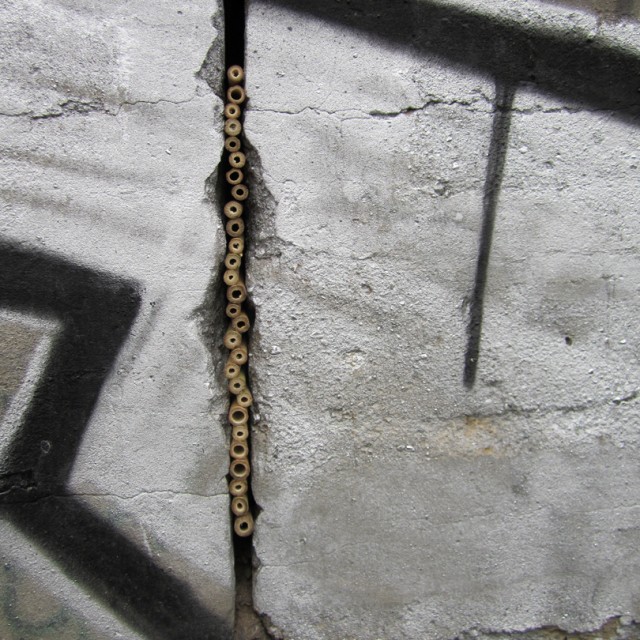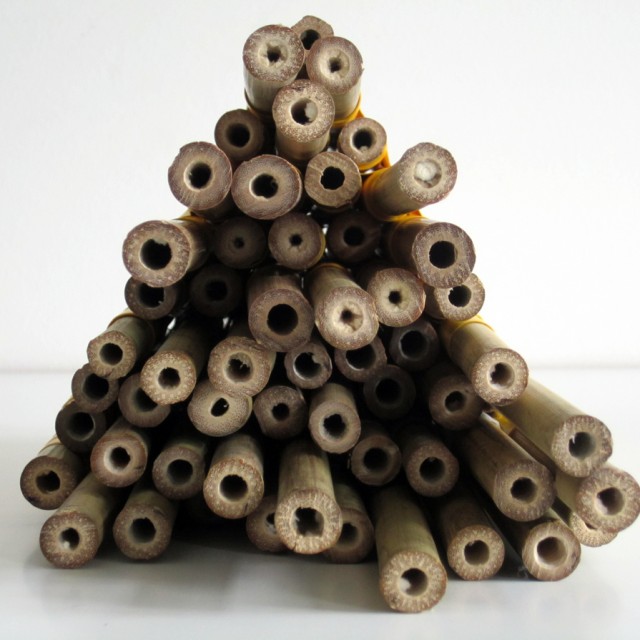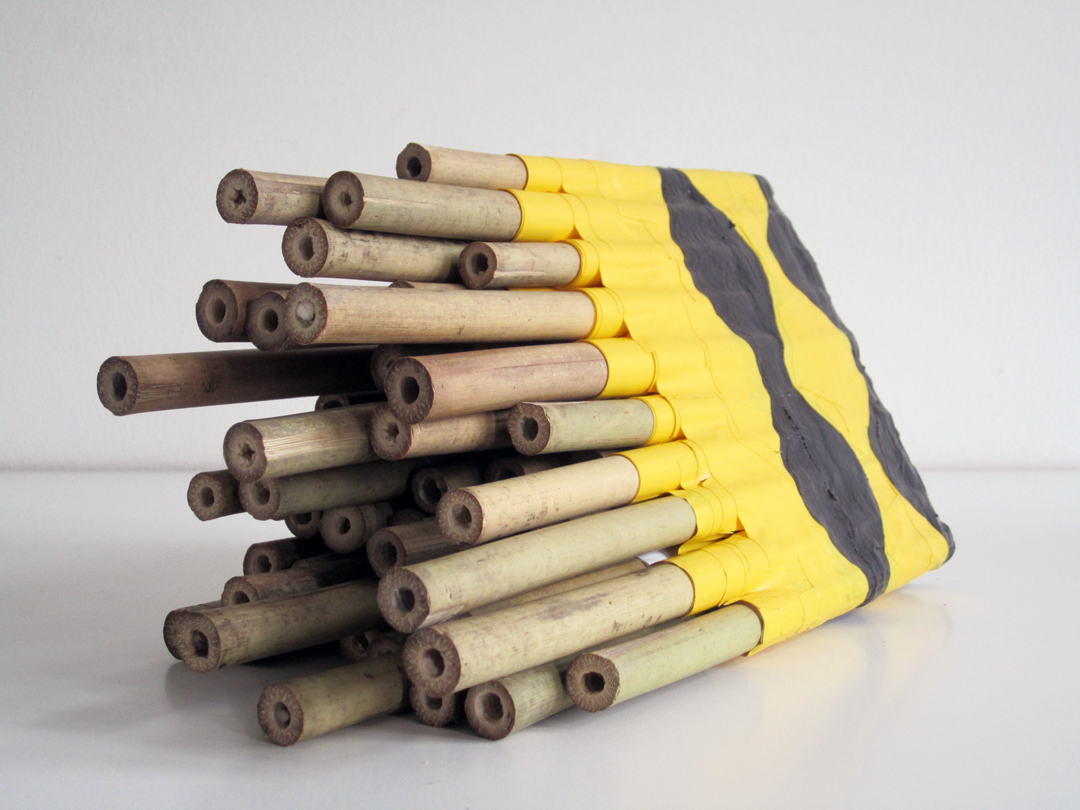City Bee Habitat
Worldwide, industrial agricultural uses the European honey bee to pollinate crops. Starting in 2006, there was a notable decline in honey bee populations, commonly referred to as “colony collapse disorder.” Researchers speculate that this may be due to stress or disease from the overuse of honey bees for pollinating crops.
While we don’t have all the information on colony collapse disorder, we have been learning about things one can do to encourage healthy bee populations. Honey bees require maintenance and care, but there are other types of bees out there that don’t require as much work. Through the Land Drama performance series and scientist Anja Wynns, we learned about how to make habitat for “solitary bees.” Solitary bees do not have a hive, queen, or make honey. They are not affected by the same parasites that affect honeybees. They are easier to encourage in your backyard garden, or in city green spaces. According to Wynns, it is a good idea to encourage solitary bees because they are excellent pollinators, and could help sustain plant life and agriculture in the wake of honey bee loss. These tiny insects are a key element in healthy growing ecology.
While doing a residency in Berlin, we have been researching wildlife habitat in urban areas and wanted to do some tests around solitary bee habitat. We looked at making both elaborate aesthetic designs and creating habitat that was integrated into existing cracks in city spaces.
To make a successful solitary bee habitat, you need an arrangement of long, thin tubes placed in a location that, ideally, faces east, so that the bees can catch the warmth of the sun. The tubes can be made by drilling into something or using a a pre-made tube form. The pre-made forms can be naturally occurring like in reeds or bamboo. We used bamboo for our tests.
We shaped the bamboo tubes into a triangular form and created a bee pattern on the side for quick visual recognition for people. We are interested in how habitats can be made or designed that is engaging to both wildlife and people. Habitat that inspires people to become invested in what happens to the animal life around them.
There are several kinds of solitary bees, among them the mason bee. So named, because of the way this bee seals off its home to protect its eggs as they grow over the winter. As more people learn about colony collapse disorder, many, wanting to help, have started building bee habitat in their backyard gardens. There is a thriving YouTube community on how to build solitary bee houses. Here are some of our favorites:
Yes Mag-Mason Bee House How To. This one is short and sweet. Also, who is this mason bee loving kid?
These ladies love their backyard garden times! Totally bee-keeping-tastic.
3:58 of solitary bees flying from their home-made habitats, great for the variety of options for how to make solitary bee houses.
Radio Aktiv Sonic Deep Map (2013)

SUPERKILEN – Extreme Neoliberalism Copenhagen Style
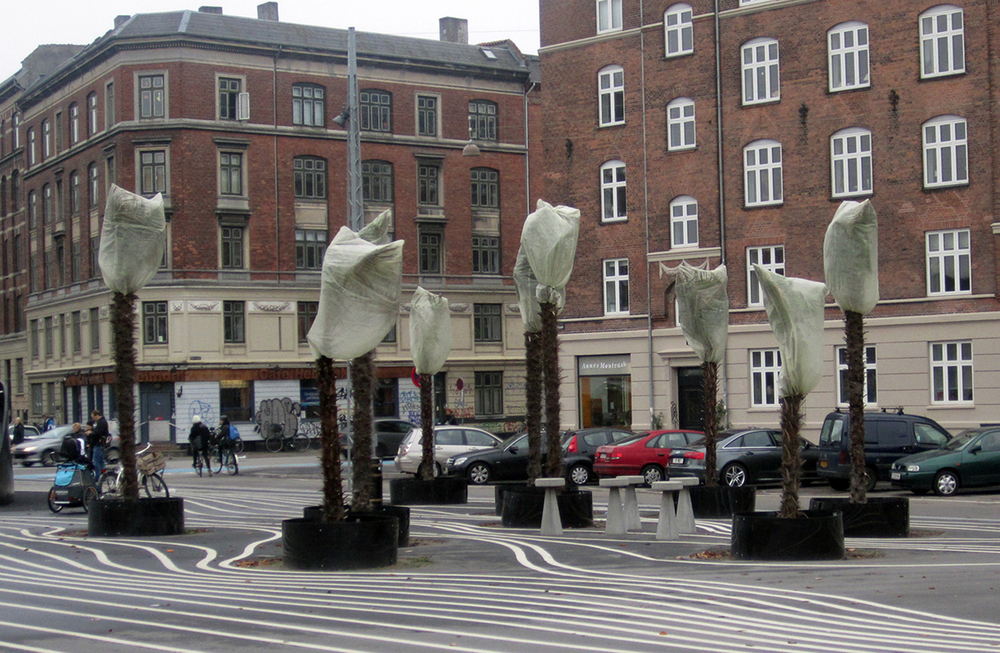
Read Brett's essay about the park.
Download our guide:

This is our guide to how-to books from the counterculture of the 60s and 70s. Click to get the download page.
Categories
- Agriculture (11)
- Animal sounds (1)
- Artist parents (19)
- Arts and culture (106)
- Bees (3)
- Book reviews (14)
- Books (18)
- Critical essays (5)
- Daily Photo (5)
- Design (36)
- Dirt (11)
- Environmental activism (43)
- Exhibitions (24)
- Farms (11)
- Forest (7)
- Friday connect (15)
- Growing (42)
- Habitat (38)
- Homesteading (16)
- Interviews (15)
- Kitchen (14)
- Living structure (9)
- MISC (15)
- Mythological (2)
- Neighborhood (83)
- Ocean News (1)
- Our Art Work (21)
- Personal – Design/Art (3)
- Play (2)
- Playground (4)
- Projects (21)
- Public space (53)
- Resilience (13)
- Sea Side (2)
- Sojabønner (2)
- Tofu (8)
- Vermont correspondence (7)
- Water (3)
- Wednesday picture (31)
- Workshop (1)
Video interview:

Watch our interview of SeedBroadcast, a mobile project that is part seed library and part seed-saving-story-collecting machine-recording the stories of seed saving, farming, and food sovereignty work being done around the US.
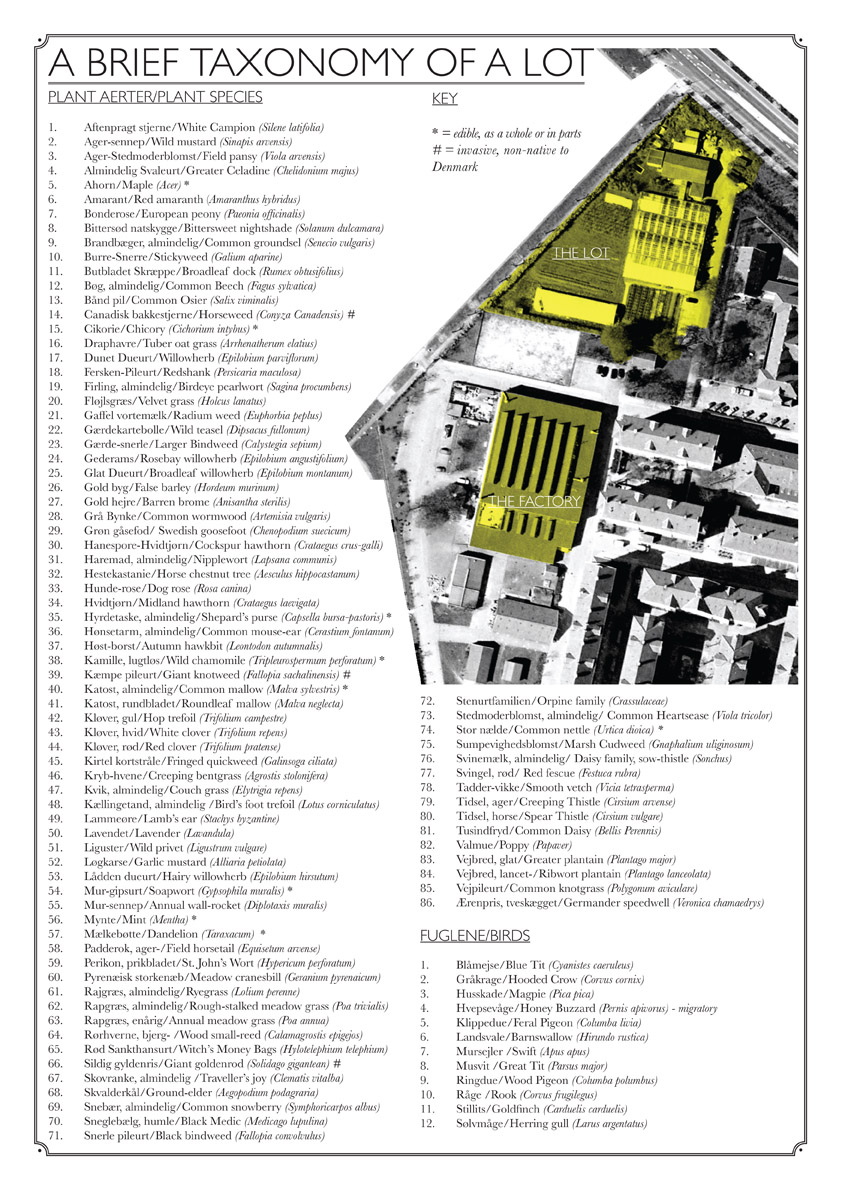
Download a poster Bonnie made about biodiversity in a vacant lot in the Amager borough of Copenhagen, in collaboration with biologist, Inger Kærgaard, ornithologist, Jørn Lennart Larsen and botanist, Camilla Sønderberg Brok: A BRIEF TAXONOMY OF A LOT

We made and installed a network of bat houses in Urbana, Illinois, to support the local and regional bat population, but also to begin a conversation about re-making the built environment.
READ MORE
BOOK REVIEW:

We write often about artists and art groups that work with putting ‘culture’ back in agriculture. Here is a new favorite: myvillages, a group of three women based in Germany, the Netherlands, and the UK. Read more...

Post Revolutionary Exercises
We really admire the dedicated hard work of Kultivator who seeks to fuse agriculture and art in their work. Click this sentence to get a PDF of their poster collection called "Post Revolutionary Exercises."

Cultural Practices Within And Across
This amazing book networks urban and rural resilience and sustainability projects around the world. Deeply inspiring projects in Romania, Paris, San Francisco, and elsewhere.
• Read our review of the book.
• Buy the book.
• Download the book.

